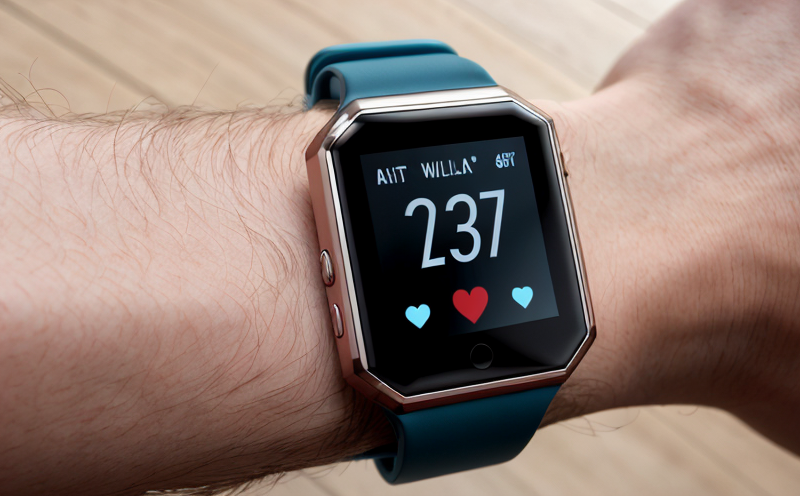IEC 61980 Wireless Power Transfer Compliance Testing for Wearables
The International Electrotechnical Commission (IEC) standard IEC 61980 sets forth the safety requirements and testing methods for wireless power transfer (WPT) systems. This service focuses on ensuring that wearable devices comply with these standards, which are critical for the safe operation of WPT systems in consumer electronics.
Wireless Power Transfer is a technology that allows the transfer of electrical energy between two closely coupled conductors without the need for physical contact. In the context of wearables and digital health devices, this means powering these devices through wireless methods such as Inductive Charging or Magnetic Resonance. The primary focus here is on ensuring that the power transfer is safe, efficient, and meets regulatory requirements.
Compliance with IEC 61980 ensures that your device can be safely used in various environments without posing a risk to users. This includes evaluating potential hazards such as electromagnetic interference (EMI), power efficiency, and safety margins. The standard also covers the design of the charging system, including the coil geometry, material selection, and operational parameters.
The testing process involves several stages, starting with initial design reviews, followed by prototype evaluation, final product testing, and post-market surveillance. Each stage requires specific tests to ensure that all aspects of the WPT system are safe and meet the required performance criteria.
Key components tested include:
- Coil inductance and quality factor
- Frequency stability
- Power transfer efficiency
- EMI emissions and susceptibility
- Safety margins for user safety
- Environmental robustness (temperature, humidity)
The testing apparatus used includes high-precision inductance meters, frequency generators, power analyzers, and EMI measurement equipment. Post-test analysis involves detailed reports that provide insights into the performance of the device under test.
| Test Parameter | Description |
|---|---|
| Inductive Charging Efficiency | Evaluates the efficiency of power transfer during inductive charging. |
| Magnetic Resonance Power Transfer | Assesses the power transfer capabilities using magnetic resonance techniques. |
| EMI Emissions | Determines compliance with electromagnetic interference standards. |
| Electrostatic Discharge (ESD) Resistance | Evaluates the resistance to electrostatic discharge, ensuring user safety. |
Industry Applications
The IEC 61980 Wireless Power Transfer Compliance Testing for Wearables is applicable in a wide range of industries, including consumer electronics, medical devices, and automotive. The following table highlights some key applications:
| Industry | Application |
|---|---|
| Consumer Electronics | Smartwatches, fitness trackers, and other wearable devices. |
| Medical Devices | Implantable medical devices requiring wireless charging. |
| Automotive | In-car wireless charging solutions for mobile devices and accessories. |
The standard is particularly relevant in industries where safety and efficiency are paramount. By ensuring compliance with IEC 61980, manufacturers can confidently bring their products to market while meeting regulatory requirements.
- Consumer electronics companies need to ensure that their devices meet the highest standards of safety and performance.
- Medical device manufacturers must comply with stringent regulations to protect patient safety.
- Automotive firms can benefit from wireless charging solutions that enhance convenience for users.
International Acceptance and Recognition
IEC 61980 is widely recognized and accepted across the globe. It is an international standard, which means it has been adopted by countries around the world as a benchmark for wireless power transfer systems.
- The United States: The U.S. Food and Drug Administration (FDA) requires compliance with IEC 61980 for medical devices that use WPT.
- Europe: The European Union recognizes the standard, which is often a prerequisite for market entry.
- Asia-Pacific: Regulatory bodies in countries like China and Japan have also adopted this standard.
The widespread acceptance of IEC 61980 ensures that devices meeting these standards can be sold globally without additional testing or certification. This is particularly important for companies looking to expand their market reach.
Use Cases and Application Examples
| Use Case | Description |
|---|---|
| Smartwatches | Ensuring that smartwatches can be safely and efficiently charged wirelessly. |
| Fitness Trackers | Verifying the safety of fitness trackers during wireless charging operations. |
| Medical Implants | Evaluating the safety and efficiency of medical implants that require wireless power transfer. |
The following are some real-world application examples:
- Apple Watch: Ensuring safe and efficient wireless charging for this popular smartwatch.
- Fitbit: Verifying the safety of Fitbit devices during wireless power transfer.
- Medtronic Insulin Pump: Evaluating the safety and efficiency of a medical implant that requires wireless power.





